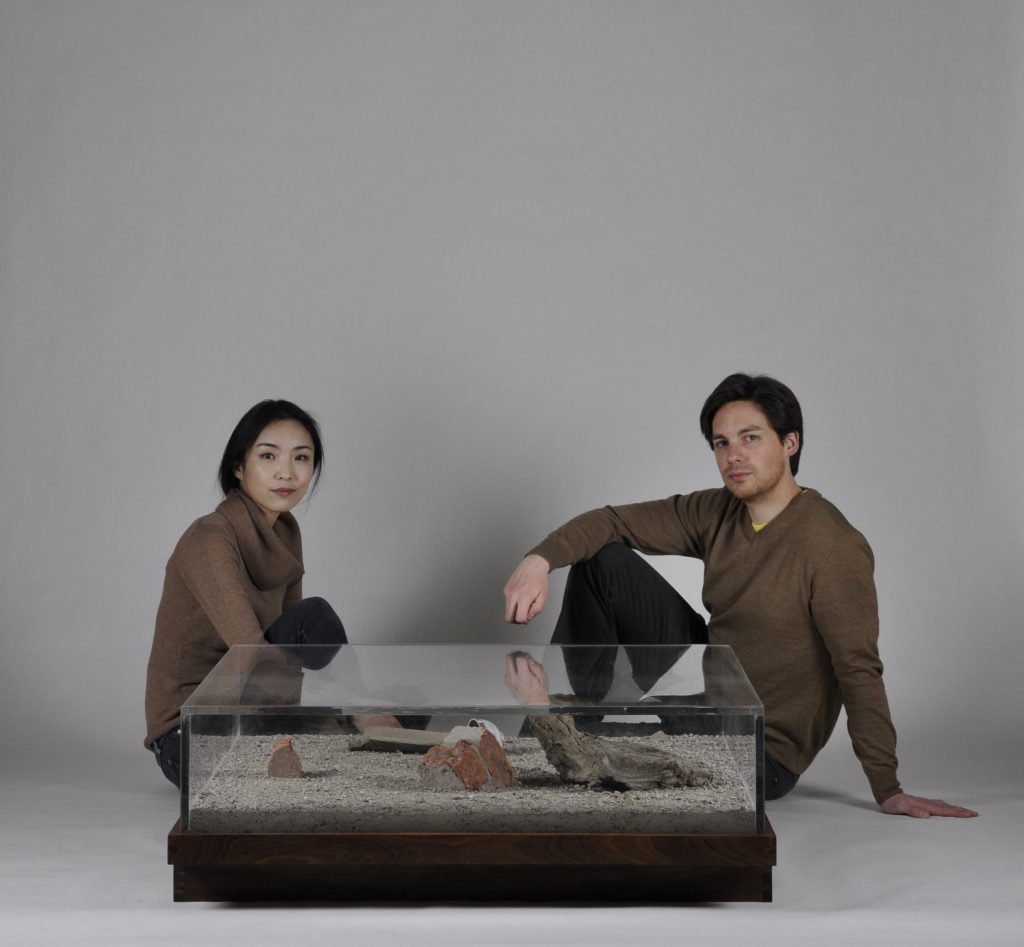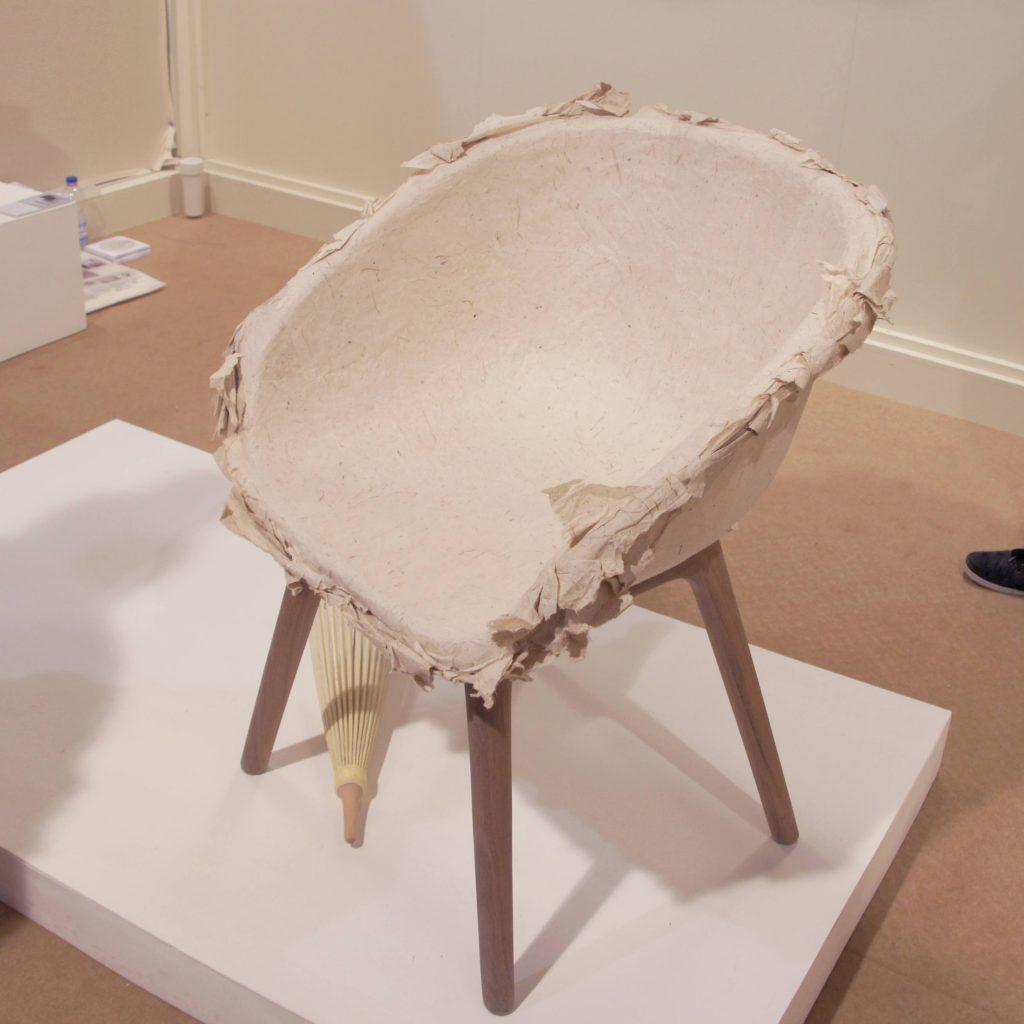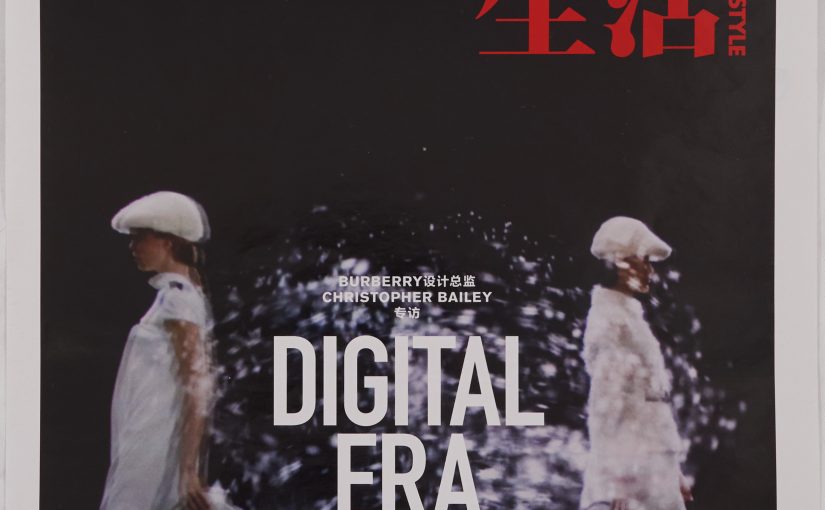A different review for a different publication.



Milan Review 2011
Chairs chairs everywhere, yet never a moment to sit. It is an uncomfortable irony that a trip to the Milan Design Fair is a week spent almost entirely on one’s feet looking at chairs (I estimate that I saw around 20,000). If you do sit down, it is invariably to sample a chair and as relief takes over, any aesthetic judgement tends to be overwhelmed.
This year saw the Salone Del Mobile trade fair celebrate its 50th birthday. While similar fairs had existed before this, it is nevertheless a significant milestone and chance to look at how things have changed. Of course it is bigger – much bigger, and now, along with the Fouri Salone, incorporates many different types of exhibition and expression that couldn’t have been predicted in 1961. But in essence much is the same. To consider the number of pioneering designs from the Modern era that are still in production and still on display, one could be forgiven for thinking not much has changed at all.
Anyone wandering into the halls promoting ‘Classico’ furniture could be further forgiven for thinking nothing had changed in the last 150 years, with its corridors of carved, gilded and inlaid baroquery. But the fair is still about connecting manufacturers with clients, buyers, designers and press. It is still about innovation and new approaches, and giving designers a valuable platform from which to share their ideas.
The main change is the incorporation of other forms of design celebrated in the Fuori Salone event taking place in various locations around the city. Every year sees new and exciting ideas and expressions that give visitors a glimpse of new technology, new ideas and how designers are interpreting them for new markets. An enduring idea is that of adaptability and how objects and environments can accommodate different needs in different environments. One of the season’s biggest events took this as its core theme: Mutation

Mutant Architecture
A huge, ambitious exhibition in the grounds of the Medieval Ospedale Maggiore, home to the University of Milan. This event, organised by Interni, invited several architects and designers to contribute works along the theme ‘Mutant Architecture,’ meaning a kind of hybrid, mobile architecture that was flexible and recyclable. The clarity of this vision was lost along the way by many of the contributors, but the beautiful campus provided the perfect setting to see recent projects from the likes of Zaha Hadid, Michele De Lucchi, Richard Meier, Giulio Iacchetti and Thomas Heatherwick. A fun sculptural exercise at the entrance of the University, by Anders Warming, explored the form of the Mini – tracing its mutation over the years from the 1960’s to the present day – and the latest Coupé concept car. Many of these were variations on existing work and ideas, but the most stunning installation, in the beautiful red brick cloisters of the Cortile Della Farmacia was by German lighting designer Ingo Maurer. Titled “Ablaze,” this precarious house with glowing red interior, intermittently bathed in smoke, managed to be a simultaneous evocation of a house on fire and a visitor from another planet. It is described by Maurer and his team member Axel Schmid as a shelter, although a somewhat precarious one. Not only is it apparently on fire, but it is also tethered against a seemingly destructive force. The somewhat apocalyptic vision was accompanied transformed the courtyard into a place of meditation, accompanied each evening by a haunting melancholic Cajun soundtrack. This, for Maurer, was the ultimate expression of a Mutant Architecture – one on the brink of destruction, reduction to its elemental form, and eventually rebirth. Of course, rebirth in the form of reuse and recycling/upcycling has been a theme in design for as long as the fair has been around, and enthusiasm for this approach, which makes playing with meaning as well use accessible to all, is certainly not in decline. Far from it, as nowadays it claims a ‘sustainability’ tag, whether it deserves it or not.

Reuse and Recycling
Spazio Rossana Orlandi has been synonymous with reclaimed and vintage design since it was opened in 2002 in a former tie factory in the Magenta district. The wonderful collection of contemporary and vintage design on sale has, since 2008, been joined by a gallery and every year during the Fuori Salone the whole building is awash with shows and designers from around the world. A familiar figure at the venue is the Dutch designer Piet Hein Eek. His signature patchwork chairs, tables and wardrobes are now instantly recognisable and are in many collections worldwide, but just form part of the output of his large studio/manufacturing facility in Eindhoven. Eek’s work has always celebrated a rawness in his use of reclaimed timber and no-nonsense construction, but this year’s exhibition took this theme further still. Several massive chairs and sofas crudely constructed from timber beams and steel pipes dominate the space. Eek explained that the show was really just a by-product of his recent move to a new studio: “The large chairs came about as a coincidence. We had a huge amount of big beam wood at our old studio, which was a pain in the ass to move. So rather than move it, we thought we could use it. The wood chair came first and then the bench. This then inspired the pipe bench, made of piles of tubing from the new studio: Gas pipes, central heating, everything.” To temper the monumental nature of these pieces, some slightly more portable irregularly-sized colourful beam benches are stacked against the wall. “We did as little as possible to them. Their size is determined by the size of the wood, just with enough taken off for the legs.” Eek’s new studio, housed in an old Ceramics factory (hence, I guess, all the pipes) once operated by Philips also now features a gallery, shop and restaurant. While the latter incorporates a huge counter also made from the pipes, Eek assures me that there are many more left for future projects.
Another example of re-use which generated a lot of interest at the fair was the Rememberme chair by Tobias Juretzek. This could be seen simultaneously exhibited as part of a student selection by the School of Art and Design Kassel, in Lambrate and at the Casamania stand in the Salone, giving a good impression of the sort of instant recognition that it evokes. Old clothes, jeans in particular, are compressed into a chair shape so that they may be appreciated again in a new guise. This, inevitably, is described in terms of sustainability through the press release, embodying the contradictions in this area. The resins required to keep the jeans in their (rather sharp, and very heavy) chair shape, is neither recyclable nor sustainable. Anyone who buys one of these chairs can be sure that it will be around for a very long time indeed.
Design and Fashion
Every year sees increasing evidence of the sometimes uncomfortable relationship between furniture design and fashion. Furniture design traditionally views itself as above the whims of seasonal changes, but is still seduced by the potential of textiles technology, print and approaches to upholstery derived from pattern-cutting. It is also true that there is pressure on furniture companies to bring out new collections with increasing frequency.
A good place to start the somewhat cool and clinical exhibition, “Ex Limbo” at Fondazione Prada by Brussels-based architectural practice Rotor. This saw the various stage sets, seating and lighting rigs from numerous Prada fashion shows dragged out of storage and arranged as monoliths in the cavernous Via Fogazzaro space. In equal measures expressive of the waste of the industry, a tribute to the skills of the joiners and riggers who put the physical shows together and a sort of ghost town; remnants of events that for a short time might have been the scene of so much excitement and glamour.
In contrast, leading luxury French fashion house Hermès launched its first collection of furniture to great fanfare in the Pelota space previously occupied by Established and Sons. Working with luminaries such as Enzo Mari and Antonio Citterio, artistic director Pierre-Alexis Dumas has put together a collection which is the epitome of reliable, restrained European good taste, albeit with a faint whiff of colonialism in some campaign-style elements. As if to emphasise the versatility of the look, the room settings were presented in a specially designed pavilion by architects Shigeru Ban and Jean de Gastines.
[This part I have decided to censor, as it was removed from the final edit by my editor, and may confuse readers of the Chinese version]
Moroso have been successfully blending novelty in textile design with furniture for a long time. This year was no different with new pieces for their own collection as well as with fashion label Diesel. “Biknit” by Patricia Urquiola is a steel frame chair and chaise longue featuring a giant-stitched design in polypropylene that forms the upholstery. While many have created interpretations of stitched furniture before, this follows the theme to its ultimate conclusion turning the bloated thread into the upholstery itself. Far simpler, but equally striking is “Blur” by Marc Thorpe, a monolithic upholstered sofa with a graduated print reminiscent of a dip-dyeing process.
Konstantin Grcic, whose name might not normally be associated with the fashion world, presented two works at the fair with a ‘Cape’ theme. The first was a chair for the new Established and Sons Collection that reinvented the perhaps down-market rug-draped-sofa as a luxury, tailored item. The second was an actual Cape. As part of the very ambitious and comprehensive Wallpaper exhibition featuring many well-known names and manufacturers, the designer created “Cappa” a contemporary interpretation of the cape – the sleeveless top coat last seen on fashionable shoulders in around 1890. The garment, created by confirmed ‘old school’ Milanese tailor Brioni, who also hosted the exhibition, is described by the designer as “a made to measure home. The idea struck me as beautifully modern or rather the ultimate interpretation of mobile architecture: to live inside a well fitted, tailored piece of cloth.”
Will this make an impact in designer dressing? Unlikely. As witnessed during the fair, designer’s fashion (as opposed to Designer Fashion) tends to fall into just two categories. The first is the Uniform, beloved of designers who have an image to maintain – think Karim Rashid’s suits or Ron Arad’s hat; the second is the studied attempt to reject fashion and embrace practicality, which wants to say “I mean business – I’m too busy to worry about clothes,” but all too often says “I didn’t know what to wear.” It was a welcome surprise, therefore, to see two British Designers bringing a bit of class to the proceedings in the laid-back surroundings of Spazio Rosanna Orlandi. James Russell and Hannah Plumb, operating under the name James Plumb, were presenting a series of furniture constructed from salvaged and reclaimed components, several of them created during a residence at the gallery in November last year. This is not a new area of activity, but the pair’s background, having met while studying fine art sculpture at Wimbledon College of Art in London, brings a particular ‘old world’ signature that is highly distinctive. But the most distinctive thing is their look. Turning their back on familiar designer tropes, the pair appeared to have stepped out of a Victorian novel. From hair to shoes, everything seems to have been chosen to match their work as closely as possible. As if to reinforce the point, one of the signature chairs featured one leg made out of a chimney sweep’s brush. It is refreshing to see this unfamiliar and distinctive aesthetic emerge from a couple of young designers not attempting to fit the mould, confident in their own style, and happy to stand out in an otherwise homogeneous crowd.
Global Influence
The reach of the Milan Fair has for a long time extended beyond Europe, both in terms of visitors and exhibitors, and increasingly features content from Asia. Last year’s successful Yii project originating in Taiwan was in its second iteration this year, with additions from Konstantin Grcic, Nendo and the Campana Brothers. This no doubt develops international reach as the project enters a commercial phase, but the simplicity of the original concept – contemporary designers working with traditional craftspeople – looks a little shaky as some of the concepts verge on gimmicks. The most interesting project was by Nendo, who also created the exhibition design. His Bamboo Steel chair, working with bamboo craftsman Chin-tuan Chiu is a clever experiment with material, although on the surface it seems to belong to a decidedly Japanese, rather than Taiwanese, aesthetic. Zona Tortona hosted the China Design Market, now in its fourth year, with a selection of work organised under the title Wo You, curated by Beatrice Leanza. This exhibition featured a mix of furniture, jewellery and textile design and, most strikingly, a square metre of grey Beijing ground, excavated, transplanted and repurposed as a vitrine coffee table by Beijing-based partnership Wolfs and Jung. Tongji University, exhibiting in the Satellite, showed a project reminiscent of Shao Fan’s deconstructed Ming chairs (although this time as functional furniture) as part of a collaboration with an acrylic manufacturer. But my favourite exhibition from China had to be the “Future Tradition” project by Innovo design team Christoph John, Jovana Bogdanovic and Zhang Lei. Working with paper and bamboo craftsmen in Yuhang, Hangzhou, the team managed to deploy traditional skills in potentially disastrous ways to create a family of well-finished objects in paper and bamboo that project a highly novel image. These included chairs and lamps, but also a re-working of the umbrella that inspired the whole project. This exhibition, also in Satellite, demonstrates how designers often work best when faced with a limited palette, or limited range of materials. It also shows that while the materials and working techniques may be unfamiliar to contemporary designers, with a little patience and humility, their thinking can sometimes go a very long way.


Below are a list of links and image credits, although many of the images don’t appear here.
http://www.internimagazine.it/
http://www.ingo-maurer.com/
http://www.rossanaorlandi.com/
http://www.jamesplumb.co.uk/
http://www.pietheineek.nl/
http://www.casamania.it/
http://www.fondazioneprada.org/
http://www.rotordb.org/
http://www.moroso.it/
http://www.brioni.com/
http://www.hermes.com/
http://yiidesign.com
http://www.nendo.jp
http://www.wolfsandjung.com/EmmanuelWolfs_BoYoungJung/W_%26_J.html
http://www.innovo-design.com/
Images (all images by Ben Hughes unless otherwise credited):
2011_Milan_17_Sunday_Maurer_Ablaze06.JPG
Ingo Maurer with Axel Schmid: Ablaze shelter for Mutant Architecture at University of Milan
2011_Milan_17_Sunday_Maurer_Ablaze11.JPG
Ingo Maurer with Axel Schmid: Ablaze shelter for Mutant Architecture at University of Milan
2011_Milan_17_Sunday_Maurer_Ablaze12.jpg
Ingo Maurer with Axel Schmid: Ablaze shelter for Mutant Architecture at University of Milan
Image: Courtesy Ingo Maurer
2011_Milan_15_Friday_Warming_Mini17.JPG
Anders Warming: Mini Sintesi for Mutant Architecture at University of Milan
2011_Milan_15_Friday_Warming_Mini14.JPG
Anders Warming: Mini Sintesi for Mutant Architecture at University of Milan
2011_Milan_15_Friday_PietHeinEek02.JPG
Chunky Beam Armchair by Piet Hein Eek at Spazio Rossana Orlandi
2011_Milan_15_Friday_PietHeinEeek05.JPG
Tube Sofa by Piet Hein Eek at Spazio Rossana Orlandi
2011_Milan_15_Friday_PietHeinEeek11.JPG
Piet Hein Eek sitting on Tube Sofa at Spazio Rossana Orlandi. Coloured one-off benches in the background.
Rememberme_Tobias Juretzek_Casamania_2011_11.jpg
Rememberme by Tobias Juretzek. Image: Casamania
2011_Milan_14_Rememberme_Tobias Juretzek_Casamania.JPG
Rememberme by Tobias Juretzek.
Rotor_Prada_AGO_4568.jpg
Rotor, Ex Limbo Installation at Fondazione Prada. Photo: Agostino Osio
Rotor_AGO_Prada_4584.jpg
Rotor, Ex Limbo Installation at Fondazione Prada. Photo: Agostino Osio
Hermes_Chaise_Sellier_Denis_Montel.jpg
Sellier Chair by Denis Montel and Éric Benqué for Hermès
Photo: Tommaso Sartori
Hermes_Matieres-SofaDeReception.jpg
Matières Sofa by Antonio Citterio for Hermès
Photo: Tommaso Sartori
Hermes_p8.jpg
Matières Sofa by Antonio Citterio for Hermès
Photo: Tommaso Sartori
Pavillion_Hermès_Maison_01.jpg
Hermès Pavillion by Shigeru Ban and Jean de Gastines
Photo: Hermès
Pavillion_Hermès_Maison_04.jpg
Hermès Pavillion by Shigeru Ban and Jean de Gastines
Photo: Hermès
Pavillion_Hermès_Maison_05.jpg
Hermès Pavillion by Shigeru Ban and Jean de Gastines
Photo: Hermès
BikNit_Patricia_Urquiola.jpg
BikNit Chair and Chaise by Patricia Urquiola for Moroso
Photo: Moroso
Blur_Marc_Thorpe.jpg
Blur Sofa by Marc Thorpe for Moroso
Photo: Moroso
2011_Milan_15_Friday 40James_Plumb.JPG
James Russell and Hannah Plumb at Spazio Rossana Orlandi
bamboo-steel_chair01_NENDO.jpg
Bamboo Steel Chair by Nendo and Chin-Tuan Chiu for Yii.
Photo: Yii
bamboo-steel_chair08NENDO.jpg
Bamboo Steel Chair by Nendo and Chin-Tuan Chiu for Yii.
Photo: Yii
bamboo-steel_chair09NENDO.jpg
Bamboo Steel Chair by Nendo and Chin-Tuan Chiu for Yii.
Photo: Yii
BeiGao_LowTable_Wolfs_and_Jung.JPG
BeiGao Low Table by Emmanuel Wolfs and BoYoung Jung
Photo: Wolfs and Jung
BeiGao_LowTable_WolfsandJung_03.jpg
BeiGao Low Table by Emmanuel Wolfs and BoYoung Jung
Photo: Wolfs and Jung
Beigao_Milan_Wolfs_and_Jung.jpg
BeiGao Low Table by Emmanuel Wolfs and BoYoung Jung
Photo: Wolfs and Jung
2011_Milan_14_Thursday_satellite62.JPG
Piao Paper Chair by Innovo Design.
2011_Milan_14_Thursday_satellite60_INNOVO.JPG
Xuan bamboo lamp by Innovo Design.
